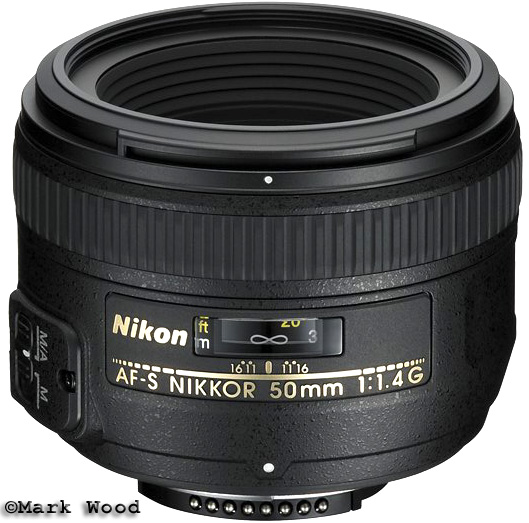Nikon just announced (well, about a week ago now I guess) the new Nikon 50mm f/1.4G lens. This is pretty much the same lens as the older, built to last Nikon 50mm f/1.4D that I have except that it adds an internal focusing motor as well as a slightly new internal design.

History
Up to now, there have been numerous 50mm designs by Nikon. This lens replaces the venerable Nikkor 50mm f/1.4D lens which has been a staple for low light photography since 1995. I own this D version. It’s phenomenal. For low light photography, fast lenses can’t be beat. I can’t imagine how well this would work on a D700 or D3 with their incredible high ISO performance. You could shoot in just about any lighting conditions.
However, over the past few years, Nikon has removed the focus motor from some of their consumer level dSLR cameras such as the D40, D40x and D60. This means that a lot of the really good older lenses such as the 85mm f/1.4 which is touted as one of the best portrait lenses ever, is not usable by these entry level cameras. In my opinion, these cameras were designed for the DX market of lenses which all had the focus motor built into the lens. They were not designed for working professionals which might use these really good, but more professional lenses.
What’s New
Aside from the more obvious internal motor (which also allows seamless manual focus override by just grabbing the focus ring), they’ve made the lens a bit more complex by adding an additional lens element. Therefore, the new lens has 8 elements in 7 groups as opposed to the older lens which had one less (7 elements arranged in 6 groups). What this should help to fix is the softness in the corners when shooting wide open. Not that this was very apparent, but Nikon claims that this new design will decrease this.
Also, the new lens boasts a new 9 bladed diaphragm which may give a nicer look to the bokeh than the older 7 bladed diaphragm which sometimes gave a somewhat jagged 7 sided spotty look. I’ll be curious to see how the reviews rate this newer lens.
For all these new features, the price of the new lens is over $140 more than the older version at $440.
My Opinion
As much as I enjoy the idea of the AF-S design with the real-time manual focus override, I really have no performance issues with the current version. In fact, I use the lens so much that I rarely remove it from my camera. Therefore, I really don’t think paying for another one is really worthwhile since I have no problems with what I have. Plus, I usually make a distinct choice to go from manual focus to auto focus so I think I’ll live with what I have.
Plus, the version I have is really solid and should last for years. I’m not so sure that all the newer lenses are quite as durable.
However, I do wish that Nikon would step up and start filling the holes in their current prime lens lineup. With very few wide prime lenses still in production, I really think that those of us in the Nikon camp are feeling a bit neglected.